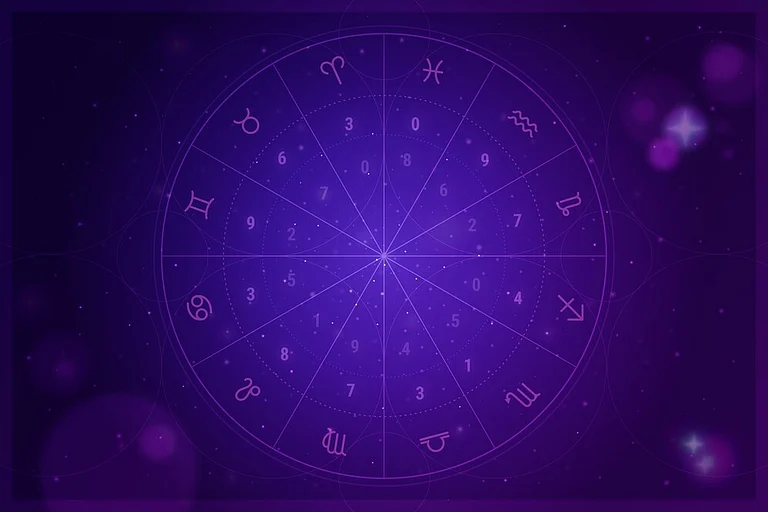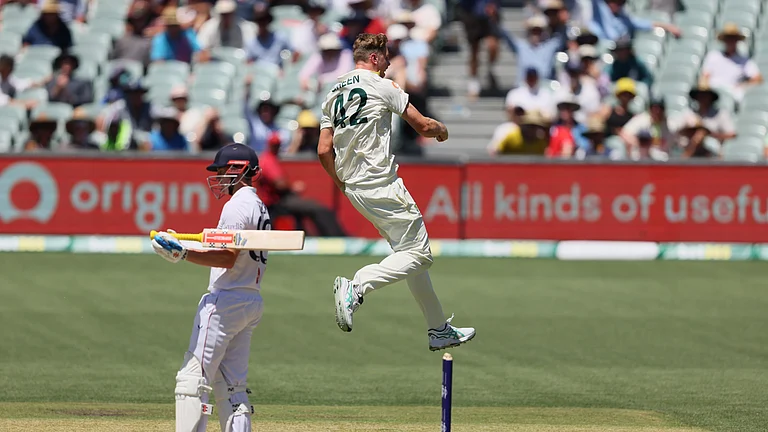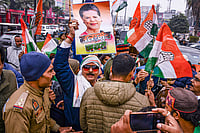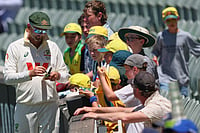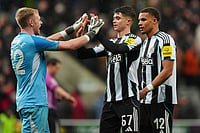First Voice
Salman Rushdie’s first published work, from the Cathedral School magazine:
To a very wise man it was once said,
“I bet you can’t stand on your head”
When he said, “Yes, I can!”
They said, “Prove it!”
So he did it and promptly fell dead!
Salman Rushdie, Age 12
***
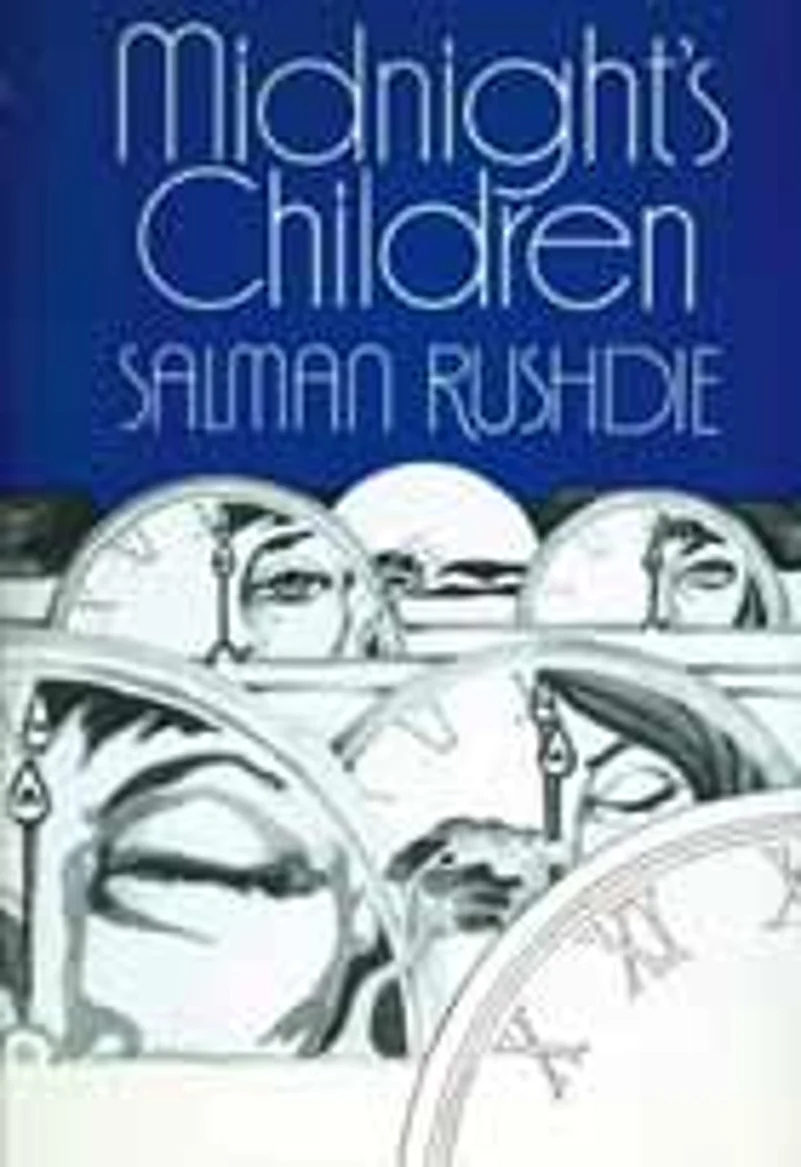
It’s now thirty years since Midnight’s Children was published. When Salman Rushdie first sent the manuscript to the publishers, the initial reaction was damning: “The author should concentrate on short stories”. Fortunately, they ultimately changed their minds and the book, of course, went to become the most celebrated of Booker Prize winners. Rushdie was a few years senior to me in Bombay’s Cathedral School and one place I often remember seeing him as a kid was at the Metro cinema: we were members of something called the Metro Cub Club, which screened film shows for kids on Saturday mornings. Many years later, reading Rushdie’s interview in The Paris Review, I discovered that he believes the turning point in his life as a writer was watching The Wizard of Oz at the Metro as an 11-year-old: he went straight home and wrote his first story, ‘Over the Rainbow’, about a little boy who’s walking down a Bombay footpath when he suddenly finds the beginning of a rainbow, with steps cut into it, which takes him up into a fairy-tale world in the sky. By some freak chance I, too, saw The Wizard of Oz at the Metro Cub Club, which means I must have been sitting just a few seats away while one of the world’s great literary epiphanies was being shaped.
So what was Rushdie like as a kid? His classmate, adman and occasional actor Keith Stevenson—immortalised in Midnight’s Children as ‘Glandy Keith Colaco’, the bully—remembers him as a very bright, aloof, slightly effete kid, who wore expensive silk shirts to class and wrote with a fancy Mont Blanc pen. “We once put sulphuric acid in his ink-pot,” Stevenson recalled years later. “So the next time he filled that damn Mont Blanc, it melted in front of his eyes”. Darab Talyarkhan, a childhood friend, remembers him as being hopeless at sports, but a talented writer, clever with words, and a favourite of his English teachers: when the class was once asked to compose limericks, for example, the other boys managed one or two; Rushdie wrote over thirty. Talyarkhan also offers an interesting example of Rushdie’s particularly vivid imagination: aged 11, he invented a game at school called ‘submarines’, where four friends would form a human submarine, with Rushdie in the lead, pumping his arms noisily, like pistons, while the others followed, kicking their legs outwards. This weird submarine would loudly make its way around the school premises during lunch-break every day, drawing jeers from boys. But Rushdie was quite impervious to the jibes: “Those morons can’t see us,” he would say superciliously, “because we are a submarine travelling deep below the surface.”
Rushdie has a quirky thing about the names of his characters. In Shalimar the Clown, for example, he whimsically named his character Max Ophuls—like the well-known film director, but no connection; when asked why he didn’t simply invent a new name for the character instead, he shrugged and replied, “I don’t know. Names stick.” Midnight’s Children is filled with names that evidently ‘stuck’, and when the book was first released, the biggest game in Mumbai was trying to figure out who-was-supposed-to-be-who. ‘Cyrus-the-Great’, for example, was apparently based loosely on Cyrus Guzder, the conservationist and chairman of AFL, whom Rushdie obviously admired in school. ‘Eyeslice’ and ‘Hairoil’ were his buddies, Fudli and Darab Talyarkhan, the former getting his nickname from the way his eyes stretched wide when he smiled and the latter from the quantities of Glostora hair-oil he applied—but their surname becomes ‘Sabarmati’, and their dashing naval officer father takes you sideways into the famous Nanavati murder case of the ’50s. ‘Evie Burns’ draws upon Beverly Burns, an Australian girl, apparently the first girl Rushdie ever kissed. And ‘Masha Miovic’ owes something to a Yugoslavian girl whom he had an adolescent crush on and who, ironically, doesn’t remember today who Salman Rushdie was (prompting the author to comment wryly, “Between the adored and the adorer falls the shadow”). But the big question, of course, is, who was the book’s protagonist, ‘Saleem Sinai’?
Rushdie insists that while everyone assumes the book to be autobiographical, Saleem, in fact, feels very unlike himself, having obstinately acquired a life of his own during the writing process, quite different from the author’s intentions. “I had a kind of wrestling match with him, which I lost,” he explains. According to him, Saleem was named in tribute to his academic rival in school, a boy named Salim Merchant, who later went on to become a successful radiologist in Australia.
It is, however, the city of Bombay itself that is arguably the real hero of the book: it shaped Rushdie, gave him his uniquely rambunctious, kinetic voice and the themes he has delved into, time and again. “The Bombay of that period, of the ’50s and the first half of the ’60s, was a city going through a kind of golden age,” he once recalled. “It certainly felt like that, like a kind of enchanted zone, at the time. It was a wonderful, exciting, vibrant city to grow up in. And I fell in love with it then, and forever.” That tropical Camelot of a city also, of course, planted the seeds of Rushdie’s fluidly multi-cultural worldview, long before its time: “It was a very exciting town to grow up in, a very cosmopolitan town. When I grew up, the kids I played with were by no means all Indian kids. They were American kids, Australian, Japanese, Europeans and so on. The idea of a separation of cultures between the East and the West was certainly never the idea I grew up with. They were all mixed in together from the beginning.” It was, indeed, a very Baumgartnerian city.
But the first portents of change already lurk within the pages of Midnight’s Children: rival processions of the Samyukta Maharashtra Samiti and Maha Gujarat Parishad fall upon each other one day in 1957 to the cadence of Saleem Sinai’s blurted doggerel, ‘Soo chhe saru chhe, danda le ke maru chhe’, killing 15 people and injuring 300. “In this way,” records Saleem, “I became directly responsible for triggering off the violence which ended with the partition of the state of Bombay.” That was probably the beginning of the city’s slow descent from cosmopolitan utopia into a dark abyss; from the optimistic innocence of Midnight’s Children to the menacing realities that pervade Suketu Mehta’s Maximum City and Gyan Prakash’s Mumbai Fables. The narrative of Saleem Sinai turns into that of Raman Fielding in The Moor’s Last Sigh: “You will come to know. Drugs, terrorism, Musulman-Mughals, weapons-systems-delivery computers, scandals of Khazana Bank, nuclear bombs. Hai Rama.”
By 2015, Mumbai is expected to become a ‘hyper-city’, with a population of 23 million, more than Sweden and Norway combined. It is “the future of urban civilisation on the planet”, observes Suketu Mehta, acidly adding, “God help us”. Mumbaikars today see their city collapsing around them, physically, economically, morally, intellectually. Crime, corruption and cynicism have oozed into every corner of daily life; the unique liberal, secular values and rule of law the city once prided itself on have been ripped from its body; anger seethes under the surface as economic inequalities touch never-before levels of obscenity.
According to Suketu Mehta, every city has a catalytic moment and, for this one, it was the anti-Muslim riots and the bomb blasts of 1992-93: they were to Bombay what 9/11 was to New York. Yet the process had begun long before: in the mid-’60s when the Shiv Sena started its campaign, first, against the south Indians and, later, the trade unions; in the ’70s, when a visionary plan for New Bombay was strangled at birth and the government and property developers joined hands, instead, to gorge on the newly reclaimed real estate of Nariman Point; in the ’80s, when the city’s 100-year-old textile industry was destroyed, along with an entire, delicately evolved urban ecosystem. This, in turn, ensured that when the old-world godfathers of Bombay’s underworld, like Haji Mastan, were blasted out of the way by the new breed of Dawood Ibrahims, there was enough frustrated Kalashnikov-fodder in the city’s gullies to ensure that the latter would not want for manpower, or momentum. No, by the time of the 1992 riots, the darkness had already seeped deep within the city’s heart.
Rushdie laments this new Mumbai, where “the political gangs are all Hindu and the criminal gangs are all Muslim”, but he is perhaps most disturbed by its fascist politics, from which there seems to be no escape (ask Rohinton Mistry, its latest victim): “That Bombay, the tolerant, open-hearted, secularised Bombay has gone,” Rushdie once rued. “It’s still a great capital, it’s still a huge buzzing metropolis. It hasn’t lost that. But it’s lost some essential thing about its flavour.” Yes, something about that erstwhile Bombay has gone forever, and nothing can bring it back, not the McKinseys of the world with their visions of a corporatised, Shanghai-like world city, nor even that breed of midnight’s children with their strange, magical powers, whom Saleem Sinai once attempted to convene. One thing that does remain, however—if you know where to look—is Rushdie’s childhood home, Windsor Villa, in a quiet cul-de-sac off Bhulabhai Desai Road.
But re-reading Midnight’s Children today is a strange experience. The book has a breathtakingly transcendental playfulness, but one also discovers in it weird echoes of an unborn future, with references, for example, to “Muhammad (on whose name be peace, let me add: I don’t want to offend anyone)” and to a wife eerily named Padma (“a consolation for my last days”). Reading it today one wonders about the enormous risk that Rushdie took, investing five years of his life on writing this seemingly self-indulgent novel, crammed with India-specific cultural references that the Western reader would never entirely catch.
So what if the book hadn’t worked out? What if he’d had to fall back on his career as an advertising copywriter? Or on his earlier career, as an unsuccessful Asian actor on the London theatre scene? Somehow it’s hard to visualise Sir Salman today as a mediocre version of Ben Kingsley or Roshan Seth. And it’s even harder to imagine him as a hooded-eyed Art Malik, playing James Bond’s mujahideen sidekick or—ha ha—an Islamic terrorist in some B-grade Arnold Schwarzenegger movie.
Thought Bubbles
Rushdie had a successful career as an advertising copywriter in London. He was best known for a campaign for Aero, a chocolate filled with air bubbles, which was born from Rushdie’s word-play, and sheer panic. A colleague of his was working on a campaign for Aero, but was stuck. In last-minute panic he sought Rushdie’s help. As they were thinking it over, the phone rang, and the colleague, who stammered under stress, answered it and, during the conversation, said, “It’s impossib-ib-ib-ible!” While he was talking, Rushdie began to scribble down every word he could think of ending with “ible”, then turned it into “bubble”. The result was a popular campaign showing photos of the bubble-filled Aero, along with headlines simply saying, “Irresistibubble”, “Incredibubble”, “Delectabubble” and “Adorabubble”.
***
Midnight’s Movie
Midnight’s Children is being shot in Sri Lanka, with a cast that reportedly includes Shabana Azmi, Irrfan Khan, Soha Ali Khan and Seema Biswas. The film has been in the pipeline for over 10 years. Originally considered “un-filmable” for its magic realism, the novel was turned into a script by Rushdie for a BBC TV series in the late ’90s, featuring Rahul Bose. In the wake of the controversial Satanic Verses, it could not be shot in India, so the BBC planned to shoot it in Sri Lanka. That project was cancelled when the island’s Muslims protested. The film was revived last year by Deepa Mehta, and she and Rushdie collaborated on the script. Recent reports from Sri Lanka say the shooting was disrupted because of objections from Iran, but when last heard of, it seemed President Rajapakse had interceded and production was continuing.








